Hopefully, the days of polluted air are numbered all thanks to these innovative global projects.
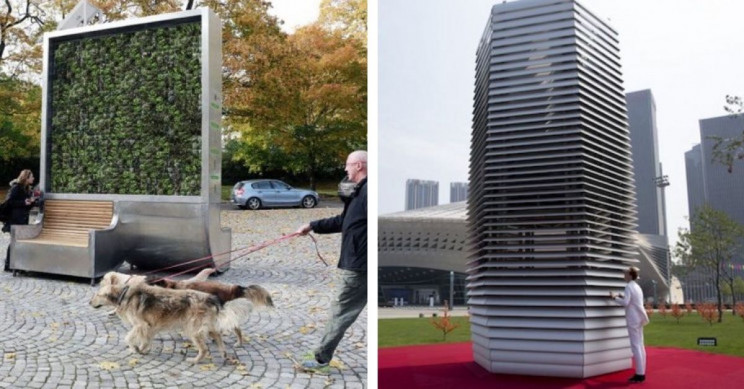
Air pollution poses a serious risk worldwide. Towns and cities are choked with smog and dangerous emissions, which are damaging both the environment and the health of global populations.
However, we’re gradually developing ways to help solve this problem. With cutting-edge technologies, government initiatives, and innovative projects, we could someday put an end to air pollution once and for all. Here are some of the projects that might make a difference.
What are the main causes of air pollution and why is it a problem?
In short, the main causes of air pollution are the expulsion of very small solid and liquid particles into the atmosphere, solids such as soot, dust, and gases such as nitrogen dioxide, ozone, sulfur dioxide, and carbon monoxide. These can cause harm to people if they are inhaled, and can also damage the environment.
Air pollution can stem from several sources; such as domestic consumption of wood and coal, vehicle exhausts, industrial outgassing, and natural sources such as dust and wildfires. When particles coming from these sources become suspended in the air, they are technically referred to as aerosols.
These air contaminants are particularly bad for the environment, as well as human health. Health effects of air pollution include symptoms like:
- Irritation of the eyes, nose, and throat
- Wheezing, coughing, chest tightness, and breathing difficulties
- Existing lung and heart problems, such as asthma, becoming worse
- Increased risk of heart attack or even death

Source: ElizabethViera/Wikimedia
Air pollution also has some potentially very serious effects on the environment too. Some common environmental impacts include:
- Acid rain
- Eutrophication
- Poisoning of animals and plants
- Ozone depletion in the stratosphere
- Climate change
For this reason, it is in everyone’s, and every nation’s interest to keep track of pollutants and work to minimize their release as much as possible. The more potent aerosols are released into the atmosphere whenever fossil fuels are burned. But they also come from natural sources like volcanoes and forest fires.
Aerosols can either enter the atmosphere directly or can form in the air through chemical reactions. Another seriously damaging air pollutant is ozone — the very compound that constitutes the protective barrier around the Earth to stave off the worst effects of solar radiation. But when ozone reaches lower altitudes, it can be incredibly damaging to the environment and to people’s health.
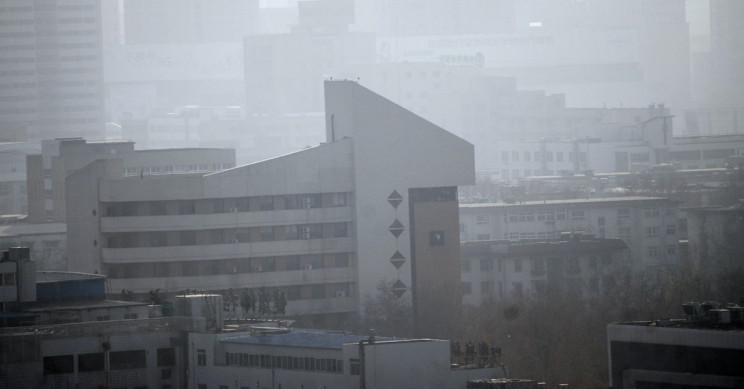
Source: Peter Griffin
According to NASA, “Ground-level ozone is created when sunlight reacts with certain chemicals that come from sources of burning fossil fuels, such as factories or car exhaust. When particles in the air combine with ozone, they create smog. Smog is a type of air pollution that looks like smoky fog and makes it difficult to see.”
Air pollution can also have a very serious impact on the Earth’s climate too. Aerosols, like those formerly mentioned, can directly impact how the Sun’s light hits the Earth’s surface. Some aerosols, such as certain sulfates and nitrates, can reflect sunlight back into space while others, like black carbon, can absorb it. How these particles interact with sunlight depends entirely on their physical properties like color and composition.
Generally speaking, according to NASA, “Bright-colored or translucent particles tend to reflect radiation in all directions and back towards space. Darker aerosols can absorb significant amounts of light”.
This particular feature of air pollution can have serious effects on the Earth’s climate. For example, after the 1991 Mount Pinatubo eruption in the Philippines, more than 20 million tons of sulfur dioxide (SO2), as well as fine ash particulate, were ejected into the Earth’s atmosphere.

Mount Pinatubo. Source: Yabang Pinoy/Flickr
SO2 reacts with other substances in the atmosphere to form fine particulate sulfate aerosols. These small particles tend to form high above the cloud level, around 37 miles (60 km) above, and can remain there for a very long time as they don’t get washed from the sky through precipitation. As a result, average global temperatures dropped by 1 degree Fahrenheit (0.6 degrees Celsius) for roughly two whole years. Interesting indeed, but is there anything that we can do to eliminate, or at least mitigate the problems associated with air pollution? Let’s take a look at some interesting proposals.
What are some of the most interesting air pollution solutions?
And so, without further ado, here are some interesting solutions to air pollution. This list is far from exhaustive and is in no particular order.
1. Friends of the Earth: Letting citizens test their own air quality
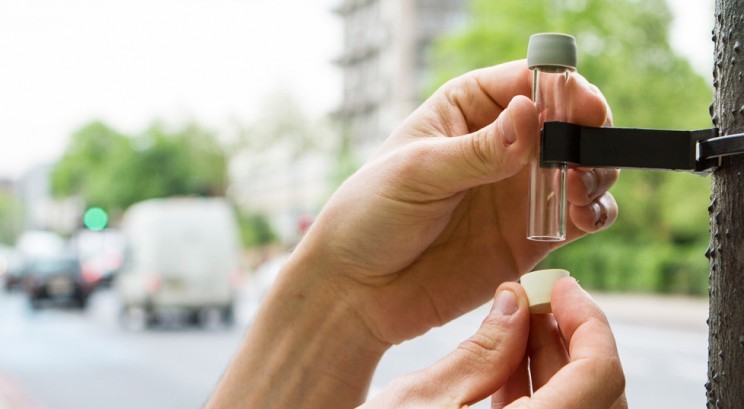
Source: Friends of the Earth
One of the best tools in the fight against air pollution is education. By educating people on the importance of clean air, what they can do to lower their own emissions, and how to be aware of the air quality in their area, the problem of pollution can be better addressed.
Friends of the Earth is an environmental charity in the UK which has started supplying citizens with testing kits so they can learn more about the quality of the air in their local areas. The kits include a monitoring tube and an easy-to-follow guide, so that concerned citizens can get accurate answers about the air they’re breathing.
2. The Nanjing vertical forest: Growing an urban forest to clean the air
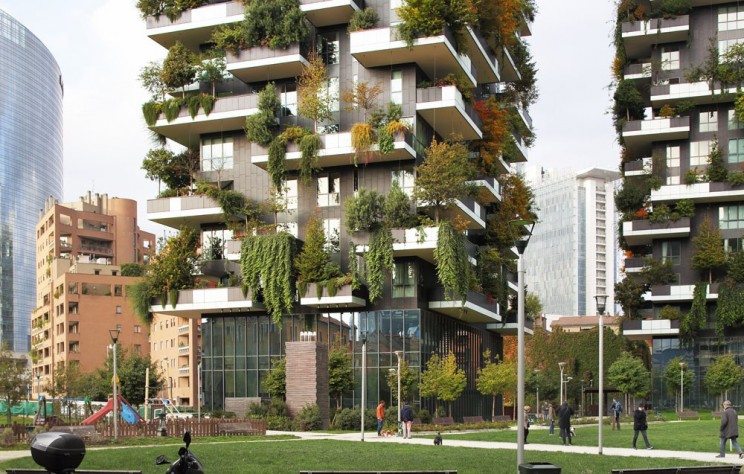
Source: Stefano Boeri Architetti
Due to the heavily industrialized areas all across China, they’ve been suffering from some of the highest levels of air pollution worldwide. Thankfully, these past few years China proposed and implemented numerous pollution-busting initiatives in an effort to make their air healthy again.
One such project is the Nanjing Vertical Forest in the Jiangsu province. It’s been estimated that the forest will be able to absorb 25 tons of carbon dioxide, and release enough oxygen to make the air 3,000 times healthier than its current state. The design features 3,000 different species of plants and was completed in 2018.
3. AIR-INK: Printing with inks made from polluted air
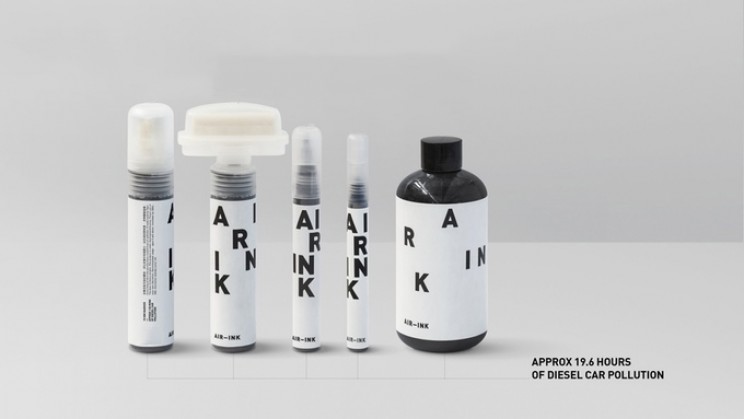
Source: Graviky Labs/Kickstarter
Some of the most interesting projects seeking to combat air pollution are also looking to utilize the pollutants drawn from the air in creative ways. One such project is AIR-INK – an ink made from carbon emissions.
The product is made by Graviky Labs and was funded via Kickstarter. People simply have to connect the KAALINK device to their car exhaust pipe, and within 45 minutes of driving, they’ll have 1 fluid ounce (30 ml) of ink. The captured pollutants are then purified in a lab and manufactured into usable ink.
4. The smog-free tower: Transforming smog into jewelry
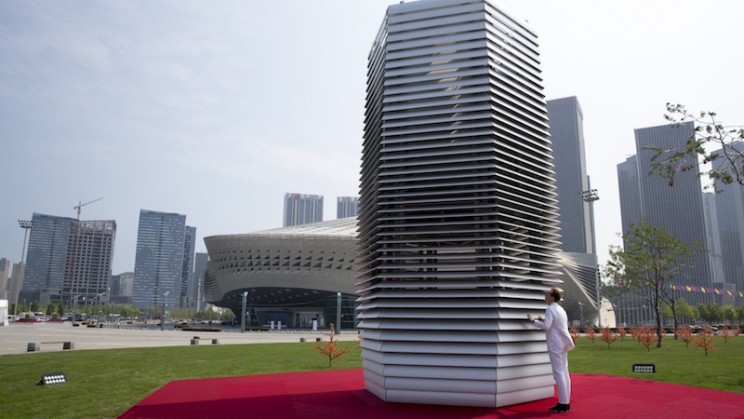
Source: Studio Roosegaarde
Ink is one thing, but what if you could turn pollution into glittering gems? Sounds too good to be true? Then take a look at the Smog-Free Tower, a vacuum that sucks in smog and condenses the particles into gemstones.
It’s the brainchild of Dutch artist, Dan Roosegaarde. The Smog-Free Tower uses relatively little energy, sending positive ions into the air which connect themselves to dust particles.
A negative ion in the vacuum then draws the positive ions back inside, bringing the particles with them. The fine carbon particles that the tower collects can be condensed to create tiny “gemstones” that can be embedded in jewelry like rings and cufflinks. Each of the tiny stones is the equivalent of 265,000 gallons (1,000 cubic meters) of purified air.
The tower made its debut in Rotterdam in 2015, it is now being used in other cities around the world.
5. Free transport: Encouraging citizens to ditch their cars
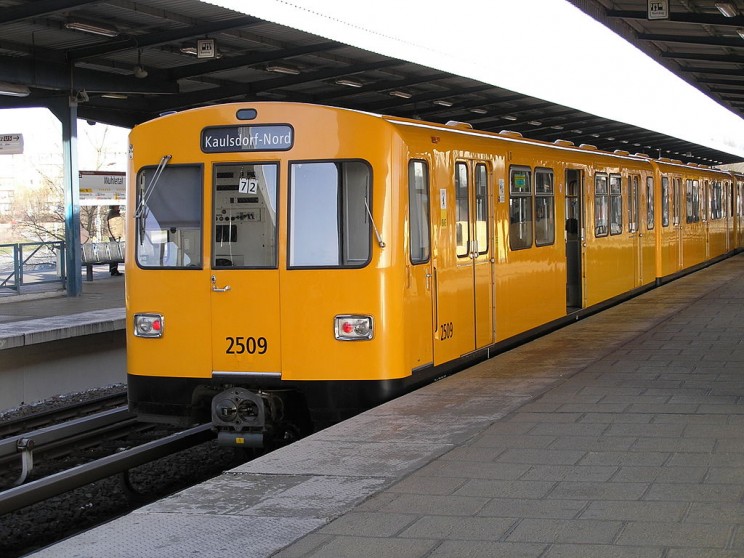
Source: Standardizer/Wikimedia
By now it’s pretty much common knowledge that our cars are some of the biggest culprits when it comes to polluting the air. That’s why Germany is considering making public transport free to encourage citizens to cut down on their carbon footprint by leaving their cars at home.
While a great initiative, it must be noted that such a project is not actually “free”, per se. They will be paid for indirectly through taxation.
The announcement was made in February of 2018, and trials look set to take place throughout the country before the year is out. It’s a controversial suggestion and one that hasn’t convinced everyone. If they can pull it off, however, it could make a massive impact on the quality of air in Germany. A 2019 survey revealed that 2/3rds of the public seem to be in favor of this.
6. The world’s largest air purifier: Cleaning the air with a skyscraper
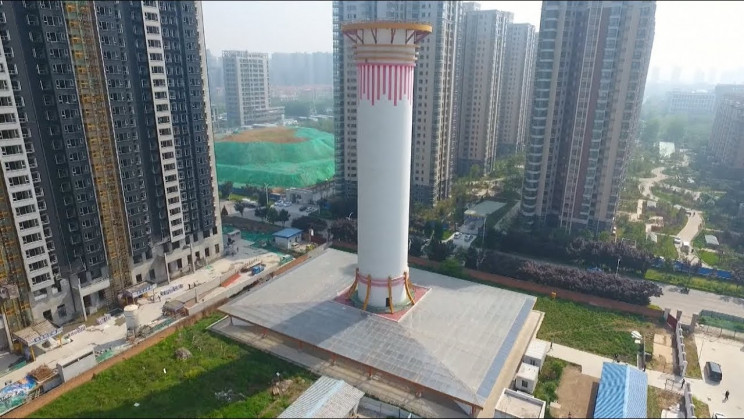
Source: CCTV/YouTube
In January 2018, work began on the world’s largest air purifier in Xian, China.
The massive structure measures 328 feet (100 meters) and can improve the air quality within an almost 4-mile radius (10 square kilometers).
The tower is just one of the many Chinese efforts to combat air pollution. The future will determine how effective the tower is, and it won’t be surprising to see similar towers erected across the country if the results are positive.
7. Pollution vacuum cleaners: Sucking up the air’s contaminants
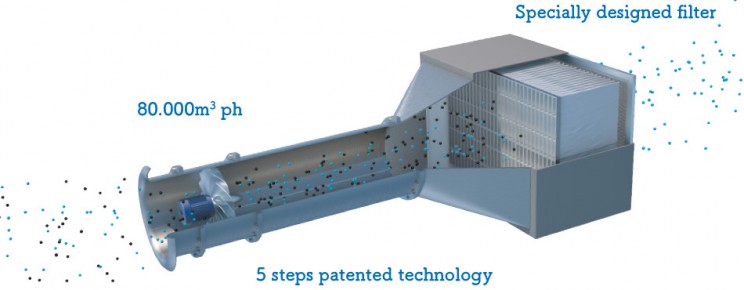
Source: Evinity Group
What if we could place giant vacuum cleaners on top of buildings, which could clean the surrounding air? This is the question that spurred the Envinity Group, a Dutch collective of inventors, into action. In 2016, they debuted an enormous, industrial vacuum designed to remove airborne contaminants.
The vacuum removes fine and ultra-fine particles, which have been identified to be carcinogens by the World Health Organization. The inventors claim that the vacuum can eliminate 100% of fine particles and 95% of ultra-fine particles within a 984-foot radius (300 meters).
8. Fuel bans: Taking fossil fuels off the roads for good
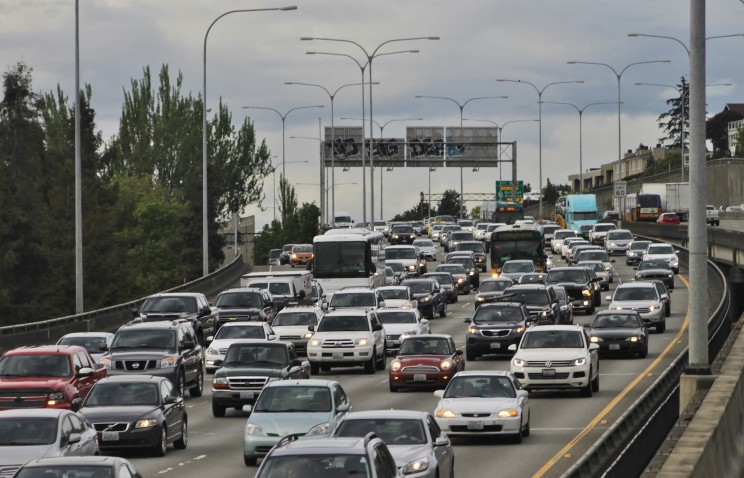
Source: SounderBruce/Flickr
Removing contaminants from the air is great as a short-term solution, but it doesn’t address the long-term effects of carbon emissions. One way that many countries are looking to create a greener, cleaner future is through the banning of cars that use petrol and diesel.
The United Kingdom is among the countries legislating to make the change. The country plans to effectively ban all new petrol and diesel vehicles from the road by 2035. With the rapidly growing interest in electric vehicles worldwide, initiatives like these have a high chance of succeeding.
9. CityTree: Purifying urban areas the natural way
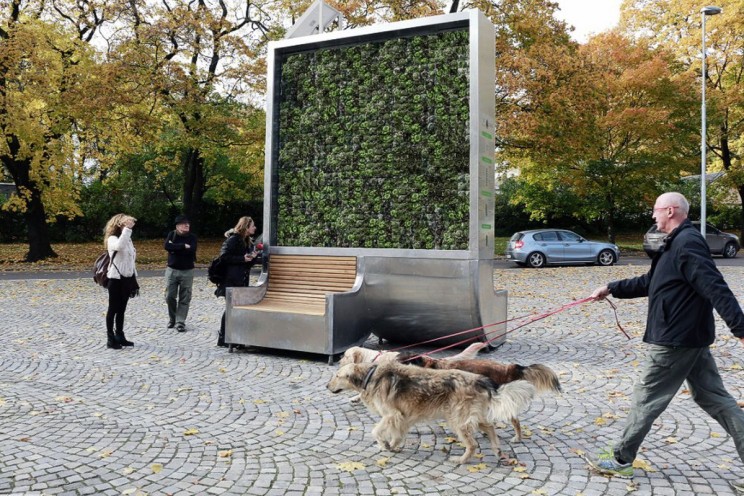
Source: Green City Solutions
Urban areas are the worst-hit when it comes to air pollution. The lack of green areas and trees in cities means that there’s little opportunity for carbon dioxide to be absorbed, leaving the air quality poor. That’s why the German start-up, Green City Solutions, created the CityTree.
The CityTree is a vertical unit, sort of like a billboard, that incorporates moss and lichen. Thanks to these hard-working plants, each unit can absorb as much as 240 tons of carbon dioxide a year. This means they can perform the task of 275 trees while demanding a fraction of the space and cost.
10. All electric: Setting the stage for zero-emissions vehicles
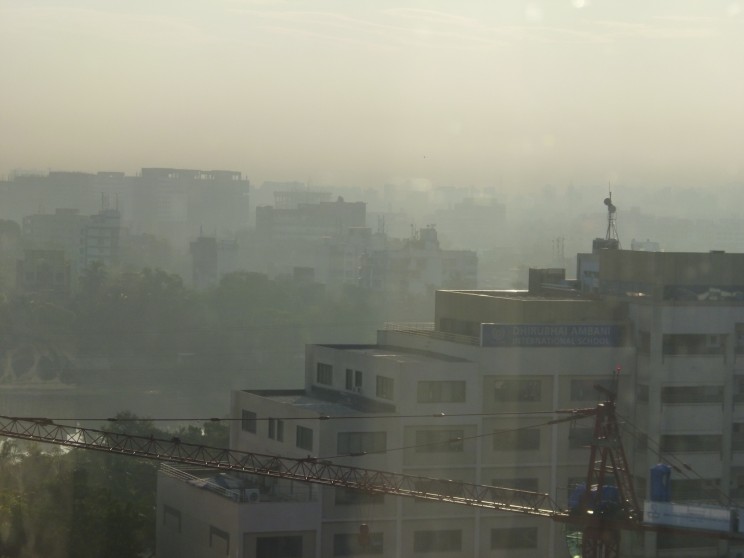
Source: Jason Rogers/Flickr
When many countries across the world finally succeed in banning combustion engine vehicles from their roads, they’ll need a lot of electric vehicles to take their place. India, to name just one country, has announced that as of 2030 they will only be selling electric vehicles.
This would be a huge game-changer for India, whose population currently suffers 1.2 million air pollution-related deaths a year. The change could also save the country $60 billion in energy costs. The brave move is one that many other countries are sure to follow.
11. Fuel from pollutants: Creating hydrogen fuel from air pollution
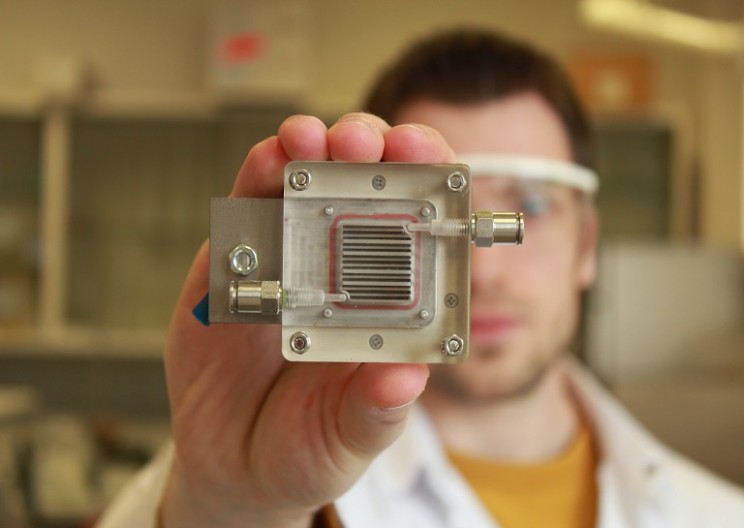
Source: KU Leuven
Today’s pollution could very well become tomorrow’s fuel. That’s thanks to research from the University of Antwerp and KU Leuven. In May of 2017, scientists struck upon a startling new method that allowed them to purify the air and create hydrogen fuel from the extracted pollutants at the same time.
The researchers created a device containing a thin membrane. On one side of the membrane, the air was purified. On the other side, hydrogen gas resulting from the degradation of the contaminants was collected. The gas could then be used as fuel. The device was powered by solar energy, making it entirely clean.
12. Pollution sensors: Providing data on air quality everywhere
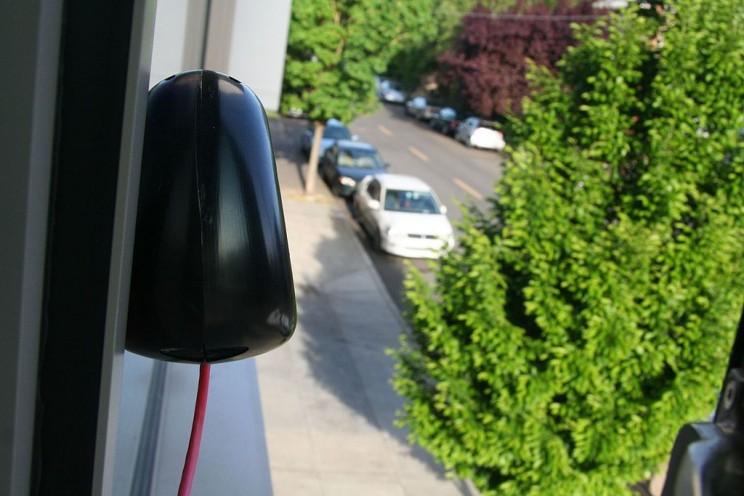
Source: Intel Free Press/Wikimedia
One issue that has stalled the fight against air pollution is a lack of comprehensive data. While urban areas are well-tested for their quality of air, suburban and rural areas have fewer resources when it comes to measuring air quality.
In India, government initiatives are working to install pollution sensors across all areas of the country in a bid to detect and manage air pollution better. A new, cutting-edge series of sensors are were certified in 2019 and have already gone on to provide valuable data in the fight against air pollution in India.
13. Smart streetlights and sensors: Working in tandem to clean the air
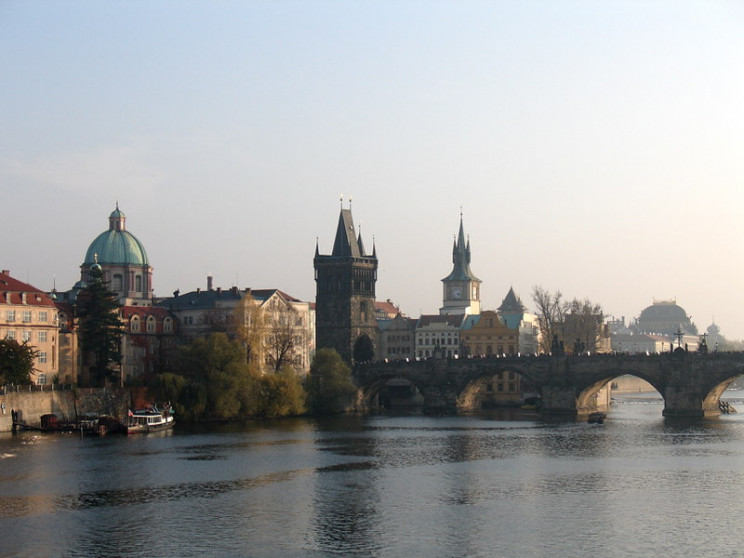
Source: fklv (Obsolete hipster)/Flickr
India isn’t the only place looking to install state-of-the-art sensors. The Czechia announced that they would be installing carbon dioxide monitors inside the streets’ smart lights in its capital city Prague.
The sensors can provide real-time information on the worst affected areas when it comes to air pollution, allowing for more effective strategies in combating pollution and letting residents know which areas of the city are of the greatest risk to their health.
14. Anti-smog guns: Shooting pollution down from the air
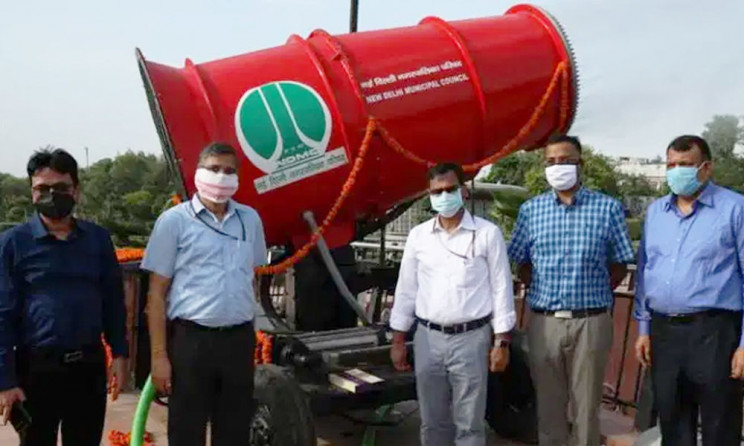
Source: New Delhi Municipal Council/Twitter
The idea of an anti-smog gun might sound ridiculous, but it could be an effective method of clearing smog-afflicted areas during times of high pollution. The government of Delhi, India tested the guns in 2017, and has since brought them on line to help bring down the dangerous levels of smog in Anand Vihar.
The guns work by spraying water vapor into the air, which absorbs the pollutants before falling to the ground like rain. While it doesn’t remove the pollutants entirely, it’s an effective short-term solution for smog-heavy days where breathing the air could present a serious health risk to residents.
15. Project air view: Tracking pollution in your area
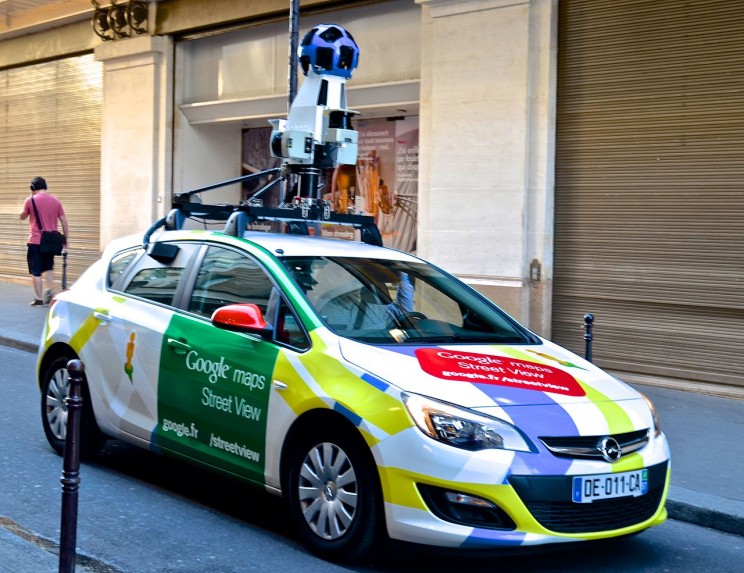
Source: David McSpadden/Wikimedia Commons
Apparently, Google Earth is useful not only for creating accurate maps of the world but also for giving us insight into the quality of air. In a project launched by Google in 2015, Google Street View cars traveled around West Oakland taking air samples.
Through this, they were able to put together comprehensive data about the quality of air in the city, and how it fluctuated over time. Thanks to this research, they could potentially use the system to allow users to examine the average air quality in their area, and other areas around the world in the future.
Access to such information would allow for more effective targeting of anti-pollution initiatives and would give people a heads-up on the more dangerous areas in the vicinity in terms of poor air quality.
And that’s all for now folks. Will any of these solutions ring the death knell on human-created air pollution or not? Many of them are very promising. The future will show if they will make a significant dent in the problem of air pollution. More innovation like this is always welcome to tackle the problem.
Article Credit: interestingengineering
